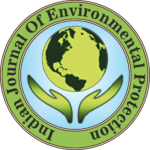IJEP 42(4): 432-442 : Vol. 42 Issue. 4 (April 2022)
D.J. Varia1* and A.M. Kothari2
1. Gujarat Technological University, Ahmedabad- 382 424, Gujarat, India
2. Atmiya University, Rajkot- 360 005, Gujarat, India
Abstract
Over the last few decades, air quality has turned into a critical environmental issue which has made more prominent effect on human health. Because air quality greatly affects the everyday existence of human, it is essential to examine the changes in air quality and predict them precisely. Our investigation focused on gauging and foreseeing the air quality of 145 crossways/intersections for smart urban communities, like Ahmedabad, Gujarat in India independently because air quality varies from intersection to intersection as it depends on several parameters, like traffic, industrial area, time of the day, etc. The significant issue with this investigation is the accessibility of the dataset for every crossway of the city. To address the issue we have created the estimation information for the air quality index (AQI) for Ahmedabad city from a similar approach as the dataset produced for Aarhus city, Denmark. The aftereffect of this examination is promising to foresee the air quality index for the intersections, utilizing artificial neural network (ANN) and long short-term memory (LSTM). At last, we examine and compare the correctness of different configurations using root mean square error in the prediction of the actual vs predicted AQI using the proposed configuration. In this paper air quality index for Ahmedabad city is generated from the same methodology as the data of Aarhus city, Denmark generated for the period of 1/8/2018 to 1/10/2018. The previous studies were based on predicting an AQI for the whole city. The novel part of this study is to develop a dataset for the Ahmedabad city, Gujarat, India and junctionwise prediction of the AQI. Moreover, the paper has proposed the client-server model to get the prediction of AQI for different 145 crossways in the city. Paper derives the conclusion that for the given dataset, the LSTM predicts AQI more accurately than the ANN. This paper is a critical inspiration for inquiring into urban air quality as well as to help the administration to design gainful strategies
Keywords
Air pollution, Air quality prediction, Machine learning, Artificial neural network, Long short-term memory, Ahmedabad, Gujarat, India
References
- CPCB. 2014. National air quality index. Central Pollution Control Board, New Delhi, India. Available at: www.indiaenvironmentportal.org.in/files/file/Air%20Quality%20Index.pdf.
- Delavar, M., et al. 2019. A novel method for improving air pollution prediction based on machine learning approaches: A case study applied to the capital city of Tehran. ISPRS Int. J. Geoinf., 8(2): 99.
- Vujic, B., et al. 2010. Experimental and artificial neural network approach for forecasting of traffic air pollution in urban areas: The case of Subotica. Thermal Sci., 14: 79-87.
- Bisht, M. and K.R. Seeja. 2018. Air pollution prediction using extreme learning machine: A case study on Delhi, India. Ed A.K. Somani, S. Srivastava, A. Mundra and S. Rawat. First International Conference on Smart system, innovations and computing. Proceedings, 79: 181-189.
- Honarvar, S.A. and A. Reza. 2019. Towards sustainable smart city by particulate matter prediction using urban big data, excluding expensive air pollution infrastructures. Big Data Res., 17: 56-65.
- Zenkert, J., et al. 2018. Big data analytics in smart mobility: Modeling and analysis of the Aarhus smart city dataset. IEEE Industrial Cyber-Physical Systems (ICPS). pp 363-368.
- Akhtar, A., et al. 2018. Prediction and analysis of pollution levels in Delhi using multilayer perceptron. In Data Engineering and intelligent computing (vol 542). Ed S.C. Satapathy, V. Bhateja, K.S. Raju and B. Janakiramaiah. Springer, Singapore. pp 563-572.
- Zaremba, W., I. Sutskever and O. Vinyals. 2015. Recurrent neural network regularization. ArXiv:1409.2329 [Cs]. Available at: arxiv.org/abs/1409.2329.
- Bui, C., V.D. Le and S.K. Cha. 2018. A deep learning approach for forecasting air pollution in South Korea using LSTM. arXiv: 1804.07891 (Cornell University).
- Evkoski, B., et al. 2019. Air pollution prediction using LSTM neural networks. The 16th International Conference for Informatics and information technology (CIIT). Proceedings, pp 5.
- Freeman, B.S., et al. 2018. Forecasting air quality time series using deep learning. J. Air Waste Manage. Assoc., 68(8): 866-886.
- Krishan, M., et al. 2019. Air quality modelling using long short-term memory (LSTM) over NCT, Delhi, India. Air Quality Atmos. Health. 12(8): 899-908.
- Chaudhary, V., et al. 2018. Time series based LSTM model to predict air pollutant’s concentration for prominent cities in India. UDM. 18: 9.
- CityPulse Project Anual Report. September 2013 – August 2014. Available at: www.ictcitypulse.eu//page /sites/default/files/citypulse_annual_ report.pdf
- Ali, M.I., F. Gao and A. Mileo. 2015. CityBench: A configurable benchmark to evaluate RSP engines using smart city datasets. In The semantic web-ISWC. Ed M. Arenas, O. Corcho, E. Simperl, M. Strohmai-er, M. d’Aquin, K. Srinivas, P. Groth, M. Dumontier, J. Heflin, K. Thirunarayan and S. Staab. Springer, Singapore. pp 374-389.
- Gardner, M.W. and S.R. Dorling. 1998. Artificial neural networks (the multilayer perceptron)- A review of applications in the atmospheric sciences. Atmos. Env., 32(14-15): 2627-2636.
- MinMaxScale. (n.d.). Available at: scikit-learn.org/stable/modules/generated/sklearn.preprocessing. MinMaxScaler.html.
- Mohan, M. and A. Kandya. 2007. An analysis of the annual and seasonal trends of air quality index of Delhi. Env. Monit. Assess., 131(1-3): 267-277.
- Fakinle, B.S., et al. 2016. Air quality index pattern of particulate around a haulage vehicle park. Cogent Env. Sci., 2(1).
- Pollution measurements- Aarhus, Denmark. (n.d.). Available at: iot.ee.surrey.ac.uk:8080/datasets /pollution/readme.txt.
